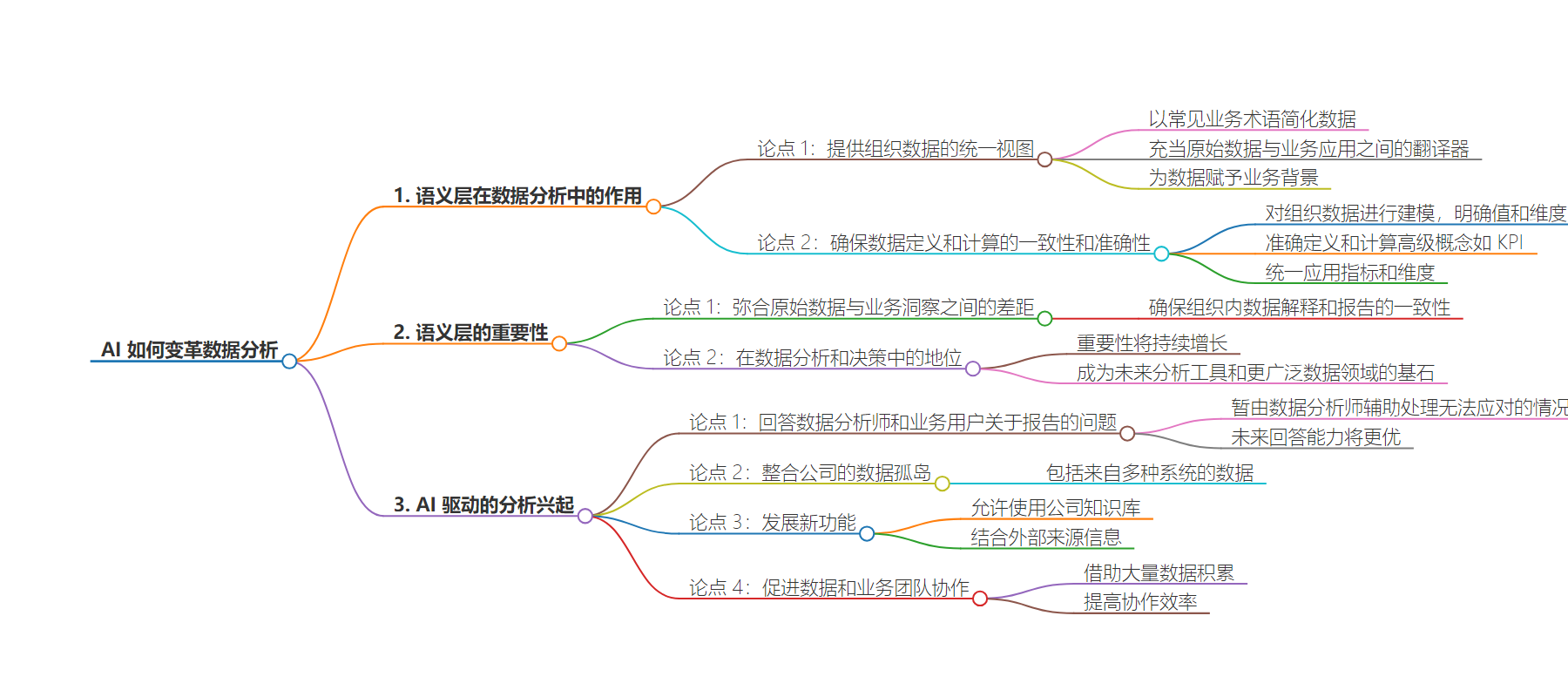包阅导读总结
1. 关键词:AI、数据、语义层、数据分析、决策制定
2. 总结:本文探讨了 AI 对数据分析的影响,包括语义层在统一数据视图和提供业务语境方面的作用,以及 AI 驱动的分析崛起,有望更好地回答问题、整合数据孤岛、促进团队协作。
3. 主要内容:
– 语义层
– 提供组织数据的统一视图
– 简化数据为常见业务术语,充当数据与业务应用间的翻译
– 能统一准确地定义和计算高级概念如 KPI
– 确保指标和维度定义的一致性
– AI 驱动的分析崛起
– 能回答数据分析师和业务用户关于报告的问题
– 会整合公司更多数据孤岛
– 数据分析平台将发展利用公司知识库及外部信息的功能
– 使数据和业务团队协作更高效
思维导图:
文章地址:https://www.infoworld.com/article/3477708/how-ai-will-transform-data-analytics.html
文章来源:infoworld.com
作者:InfoWorld
发布时间:2024/7/30 8:30
语言:英文
总字数:1330字
预计阅读时间:6分钟
评分:89分
标签:人工智能在数据分析中的应用,数据分析师生产力,自助式分析,人工智能驱动的工具,业务洞察
以下为原文内容
本内容来源于用户推荐转载,旨在分享知识与观点,如有侵权请联系删除 联系邮箱 media@ilingban.com
By offering a unified view of an organization’s data, the semantic layer simplifies the data in common business terms. It acts as a translator between raw data and business applications, giving business context to the data. By modeling the organization’s data with clearly defined values and dimensions, higher-level concepts like KPIs can be consistently and accurately defined and calculated. This ensures that metrics and dimensions, once established, are uniformly applied. For instance, any report or dashboard referencing “total revenue by month” will always use the same definition.
The semantic layer bridges the gap between raw data and business insights, ensuring the consistent interpretation and reporting of data across an organization. As organizations increasingly rely on data-driven insights and metrics, the importance of the semantic layer in data analytics and decision-making will continue to grow. It will become a cornerstone of future analytical tools and indeed of the data landscape more broadly.
The rise of AI-driven analytics
Just as AI answers questions about code for developers, AI will be able to answer questions about reports for both data analysts and business users. Although data analysts will still join in at this stage if the technology can’t handle it, AI is poised to become even better in responding to questions. With time, AI will ingest more and more of a company’s data siloes—including data from CRM systems, support-ticket systems, and ERP systems. Data analytics platforms will also develop functionalities that allow company knowledge bases to be used, including information about its clients and metrics, along with information drawn from external sources (like stock exchange data, news feeds, and market analysis). Bolstered by amassing vast amounts of data, AI-powered data analytics platforms will further bridge the gap between data and business teams and allow them to collaborate much more efficiently.
